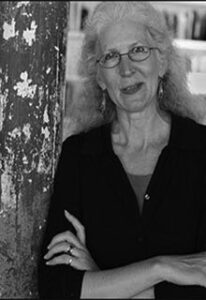Introduction
In Ovid’s Metamorphoses, a boy turns into a daffodil, a girl turns into a tree, a husband and wife turn into snakes and slither away together. The fisherman Glaucus, seeing the fish he’s just caught return to life after he’s spread them out on the meadow, eats one of the strange leaves they’re lying on and turns into a green-bearded, blue-armed sea god. What happens in what we call real life is no less strange. I like it when such moments of transformation, utterly strange, utterly essential, find their way into fiction.
Transformation has been on my mind a lot, partly because I’ve been immersed in Darwin’s work these past two years and partly because during that time I’ve been living in an old brick mill building in North Adams, Massachusetts. During the summer of 1911, photographer Lewis Hine documented some of the children who worked here, turning cotton into cloth. (In one photo, a dozen young boys have been herded together in front of the building; the littlest boy, barefoot, is happily smoking a pipe.) Other things were made in this building later, after the textile industry collapsed. Now, shiitake mushrooms grow in what was once the weave shed across the street, while art grows here. Found family snapshots, lost for decades, turn into videos accompanying new music compositions. Sheets of Plexiglas turn into transparent buildings, clay is shaped into haunting figures, old bones and dead ants combine into new arrangements. A green garden hose turns into a cactus, and words turn into poems and stories. Pigments and scraps of text and marble dust and fibers turn into paintings large or small, abstract or figurative, while soldiers’ faces and stories are captured in piercing photographs. When longtime North Adams residents, intrigued by the building’s evolution, come by to visit, they tell stories about working here in earlier days. As a teenager, one neighbor said, he sewed together the components of canvas postal bags for a company that occupied one floor of the building. Later, assembling sleeping bags, he worked in a vast room filled with floating white down.
It’s hard, in this environment, not to think about the transformations of people, places, and relationships over time, or about how things designed for one purpose can be used, so interestingly, for another. Lisa Nilsson’s Specimens of Gray, an image of which graces this issue’s cover, playfully embodies some of these ideas. A box 12" X 12" in the original, it’s described by the artist as an "assemblage composed of found and made objects placed in niches carved into a plywood support and then sealed under glass. Mixed media including: balloon-end, gouache rendering of balloon-end, balloon-end crewel worked in thread, scrimshaw of plastic monkey head, plaster cast of plastic monkey head, mouse molar, typewriting, and topographic paper sculptures."
The mouse molar is the same as it ever was, but also—freshly visible in all its beauty and singularity—not the same. The best fiction performs the same miracle, selecting from all that is around us, every minute, those words and images that make us pay attention. Editing this issue of Ploughshares, reading so many complex and resonant stories, I chose those in which precise language restores what we otherwise, out of habit, fail to notice. Those that capture the mystery of metamorphosis; those in which characters are transformed by love, rage, grief, exile, politics, religion, art. In the stories gathered here, characters change, often despite their own resistance. Their understanding of their earlier lives changes, as the world—constantly, obdurately present—changes around them. Guns go off, alewives glitter like mirrors, venomous serpents flick their tongues and offer salvation or death. Families add members, lose members, transpose their relationships—and all the time the rest of the world is also, always, in flux. I love stories that, fusing the inner life and the outer life, register the transformations in both. I hope you will enjoy these stories, too.

